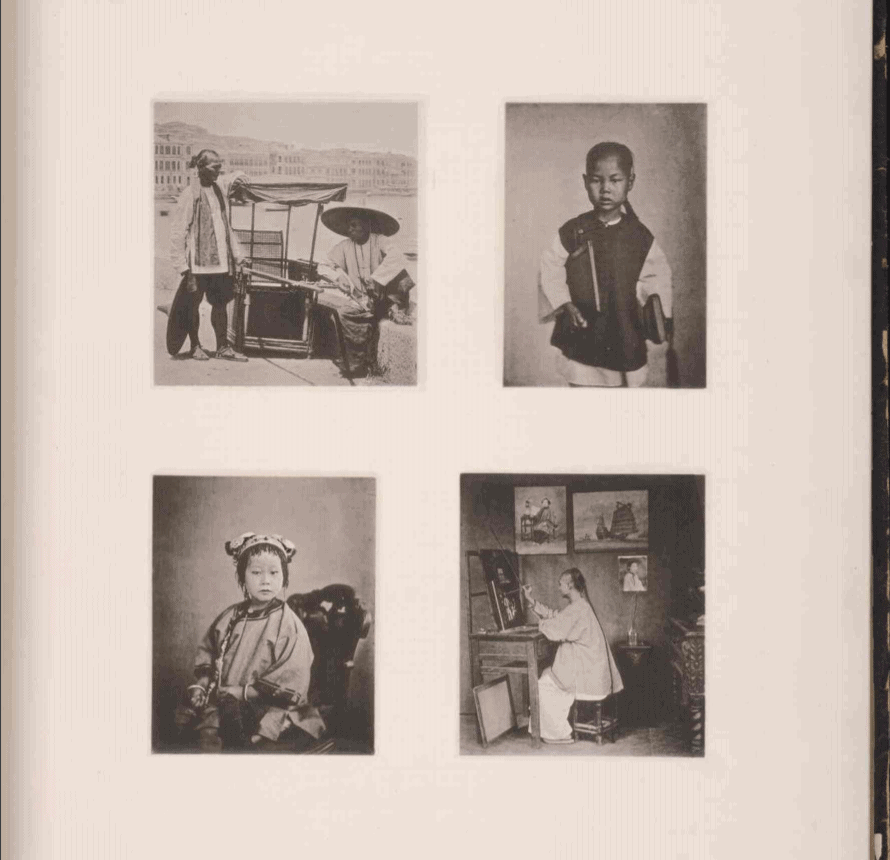Join me as we use historical thinking skills to further analyze some images.

Look at the audience, not a phone in sight, just enjoying jazz in the moment. With the armed forces being such a demanding and sometimes horrific journey, I think both being in a jazz band or simply listening to jazz music would be a pleasant way to spend an evening. We know this big band style of jazz and the days of Frank Sinatra was popular in the 1940’s which could clue us in on when this image was captured. What other aspects of 1940’s culture is present? Do you think traditions like this continue today in the armed forces?

It looks as if they are in a dining hall of sorts when focusing on the napkins and condiments on the table. Why might they be performing here? Could they be overseas or is this a domestic base?

John Thomson was the first known photographer to document the people and landscape of China. He worked to capture all aspects of Chinese life and share the culture with the Western World. What is the significance of better understanding another country’s culture? Could this have been the first time these Chinese citizens saw a white foreigner?

How did the photographer communicate with his subjects? What’s the significance of that long hair? What does he appear to be painting?

This is what class looked like before distance learning. Based on the formal dress and use of cursive, what year might this be? Also, what is the purpose of this photo, does it seem pretty mundane? Might this photo be taken outside of the U.S.? Is this a public or private school? What are the students gathered around?

In the zoom above we can make out the writing on the chalkboard that shows us the lesson is on the Pilgrim’s voyage. How might that lesson differ in today’s classrooms?
In the zoom below we see that there is a photo hung front and center in the classroom. I know having a photo of the country’s leader is a common practice in classrooms around the world but what might this be a photo of here?



Wow! I’m really interested in learning more about John Thomson’s work. I’d love to know what the purpose of his travels was and how he captured these images. It looks like the individual in the second image is painting a portrait as well, which is interesting composition.
I was thinking the other day about the bias we have when consuming media, particularly when it comes to photographs. And your post made me think about this even more, because I think the picture feels like it’s older than it is simply because it’s in black and white. I was really surprised to see when it was actually taken. This would be an excellent lesson to do with students; illustrating the subconscious biases we hold when we consume media.
Three very different images. I like the contrast and questions you pose. As a history teacher, I’m especially attracted to the third – in part because people are still teaching history this way (Not necessarily a good thing).
I can’t see may details of what the model looks like. But from the rousing quote on the wall, I’m sure its more about the heroism of the Pilgrims than the indigenous people who lived in the lands the Pilgrim overran.
And of course, I’ll bet that the depiction of Thanksgiving was the idealized version of sitting down to share a meal with the locals. I admire that someone built this model to help these young kids “visualize” the event. But it is largely fictitious.
Also interesting to look closely at the kids and teachers. All dressed so nicely. And an all white group. Not exactly what you’d expect to see in a Washington DC school today.